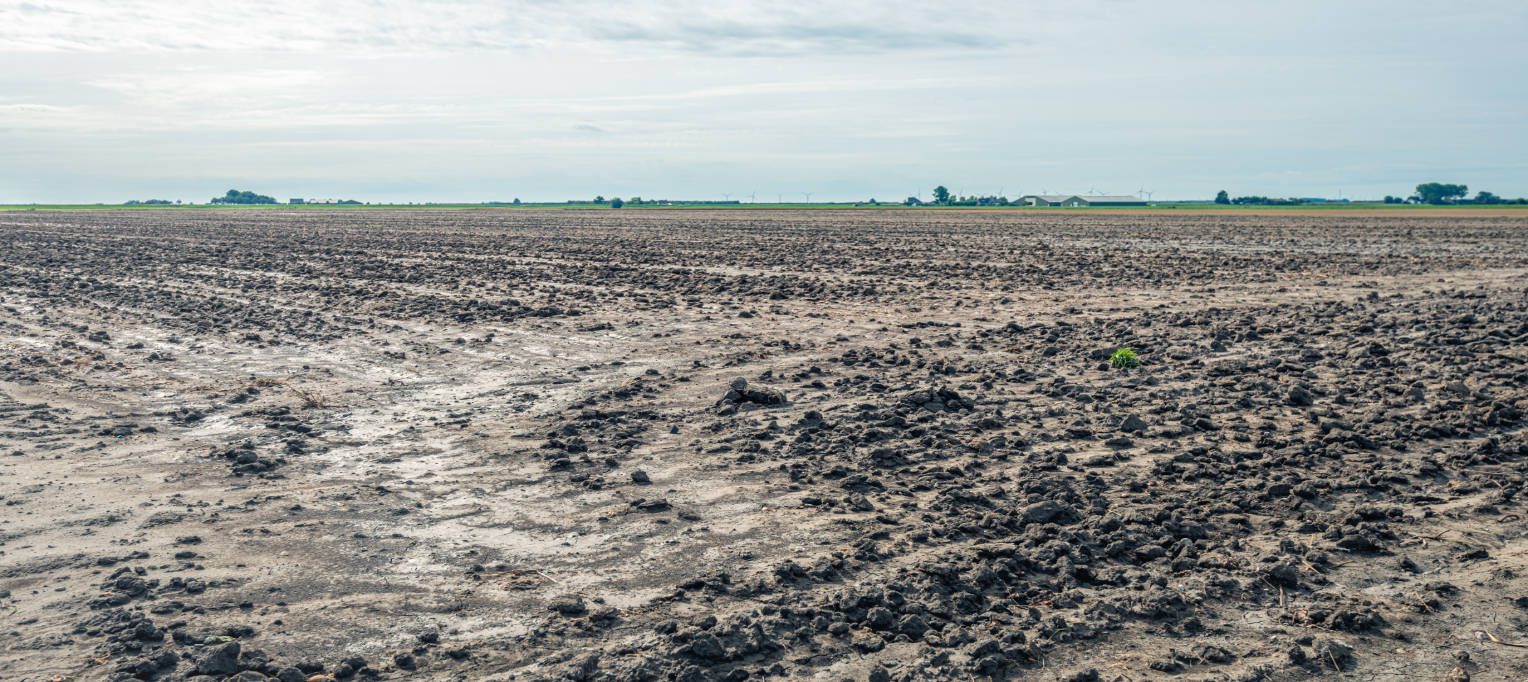Industry Knowledge: The Challenges of Silt Soil Capping

One of the challenges faced by farmers growing small-seed vegetable crops like leeks, onions, parsnips and carrots, particularly in areas with silt soils, is the issue of soil capping. This phenomenon can have severe implications for crop yields, affecting both the quality and quantity of the produce. In this blog post, we will delve into the challenges of silt soil capping in commercial root crop production and explore potential solutions to alleviate this problem, including the use of mechanical fracturing of the soil profile.
Understanding Silt Soil Capping
What is Soil Capping?
Soil capping, also known as soil crusting, occurs when the soil surface becomes compacted and forms a hard layer or “cap.” This cap can impede water infiltration, gas exchange, and the emergence of seedlings. Silt soils are particularly prone to capping due to their fine particle size and the way they interact with water and other environmental factors.
Why is Silt Soil Prone to Capping?
Silt soils are composed of particles that are smaller than sand but larger than clay. This unique particle size makes silt soils susceptible to compaction, especially when wet. When silt soil particles are exposed to rainfall or irrigation, they can disperse and clog the pores in the soil, leading to the formation of a dense, impermeable layer on the surface. As the soil dries, this layer hardens, creating a cap that is difficult for seedlings to penetrate.
The Impact of Soil Capping on Vegetable Crops
The impact of soil capping on root crops can be severe and multifaceted:
- Reduced seedling emergence: A hardened soil cap can prevent seedlings from emerging, reducing plant populations and leading to poor crop stands.
- Impeded water infiltration: Soil capping can limit water infiltration, causing water to run off rather than soak into the soil. This can lead to water stress and reduced crop yields.
- Restricted root growth: The dense layer of soil can restrict the growth and expansion of root systems, limiting the plant’s ability to access nutrients and water.
- Decreased gas exchange: A soil cap can impede the exchange of gases between the soil and the atmosphere, affecting root respiration and overall plant health.
- Disruption of earthworm and other biological activity: Decreased gas exchange and water availability will also impact the microbial, arthropod and earthworm activity, which is critical for the soil’s health.
- Prevents applied nutrients from entering soil: restricted water infiltration also impedes the movement of applied nutrients that are in solution, particularly nitrogen.
Solutions to Alleviate Soil Capping
1. Mechanical Fracturing of the Soil Profile
Mechanical fracturing involves the use of specialised equipment to break up the soil cap and improve soil structure. This process can be particularly effective in silt soils, as it helps to create larger pore spaces and improve water infiltration and root growth.
Techniques for Mechanical Fracturing:
- Subsoiling: Subsoilers are implements that penetrate the soil to a depth of 12 to 24 inches, breaking up compacted layers and improving soil structure. This can be particularly effective in silt soils, as it helps to create larger pore spaces and improve water infiltration and root growth.
- Specific drill implements: A fractured rough soil surface after planting is less likely to cap. This can be achieved by swapping from the standard smooth steel full-width roller to a cage roller to consolidate the soil profile and get good seed-to-soil contact. A trailing rake can also fracture the soil profile. However, care must be taken not to rake too deep and disturb precisely spaced seeds.
- Inter-row hoeing: Inter-row hoeing uses vertical blades to slice through the soil, breaking up compacted layers and creating channels for water and roots to penetrate. This technique can be utilised after the crop has been sown.
2. Use of Cover Crops
Cover crops can be used to improve soil structure and reduce the risk of soil capping. Cover crops help to increase organic matter in the soil, which can improve soil aggregation and reduce the tendency of the soil to cap.
Typically, cover crops are sown before the main vegetable crop and are chosen to be easily removed once the crop is established, and they have fulfilled their purpose. In the UK, growers tend to use a low seed rate of spring barley, which is quick to establish, helps reduce wind erosion and can be killed using a contact-acting graminicide.
3. Mulching
Mulching involves the application of organic or inorganic materials to the soil surface to help retain moisture and reduce soil compaction. Mulching can help to reduce the risk of soil capping by preventing the soil surface from becoming too dry and compacted.
4. Irrigation Management
Proper irrigation management is essential for preventing soil capping in silt soils. Over-irrigation can lead to soil compaction and capping, while under-irrigation can cause the soil to dry out and become hard. Farmers should aim to apply the right amount of water at the right time to maintain optimal soil moisture levels.
5. Soil Amendments
The addition of organic matter, such as compost or manure, can help to improve soil structure and reduce the risk of soil capping. Organic matter helps to increase the soil’s ability to retain water and nutrients, which can improve plant growth and reduce the risk of soil capping.
Conclusion
Soil capping in silt soils presents a significant challenge for commercial vegetable production. However, with the right strategies and techniques, farmers can mitigate the effects of soil capping and improve the productivity and profitability of their operations. Mechanical fracturing of the soil profile, along with the use of cover crops, mulching, irrigation management, and soil amendments, can help to improve soil structure and reduce the risk of soil capping, ensuring the healthy growth and development of root crops.
For growers looking to upgrade their existing precision drill, the Stanhay Configurator is a great place to start building a specific system to alleviate the effects of compaction on silt soils.
